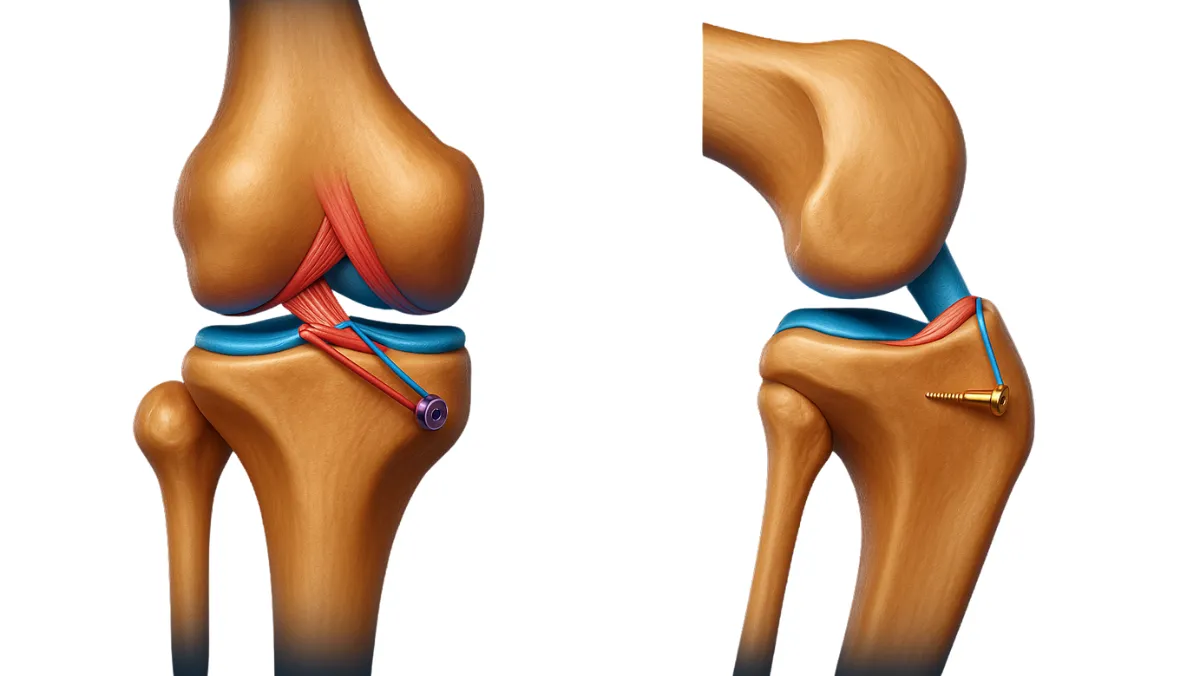
Safety Rate
An Anterior Cruciate Ligament (ACL) avulsion occurs when the ligament is torn away from its attachment site on the tibia, often along with a small piece of bone. This injury typically happens during high-impact sports, sudden twisting or pivoting movements, or traumatic accidents. A complete avulsion severely compromises knee stability, making normal activities such as walking, running, or climbing stairs difficult and unsafe.
To restore knee function, ACL avulsion fixation is performed. This surgical procedure reattaches the ligament (and any associated bone fragment) to its natural position, helping patients regain joint stability and preventing further damage.
ACL Avulsion fixation can be performed through arthroscopic surgery (minimally invasive) or open surgery (direct exposure). The choice depends on the complexity of the injury and the size of the bone fragment..
This is the preferred modern technique for many avulsion injuries. Small incisions (keyholes) are made, and an arthroscope (a camera-assisted tool) allows the surgeon to view the knee on a monitor.
Key Steps:
Advantages:
In some cases—especially with large bone fragments or complex avulsion patterns—an open approach may be chosen. A larger incision provides direct access to the injury site, allowing precise manipulation and fixation.
Key Steps:
Advantages:
Rehabilitation is essential for both arthroscopic and open fixation:
With timely surgical repair—whether arthroscopic or open—and consistent rehabilitation, most patients achieve excellent functional outcomes. Early intervention offers the best chance for restoring stability, protecting joint health, and maintaining an active lifestyle.
Both arthroscopic and open ACL avulsion fixation are effective techniques for reattaching the ligament and restoring stability. Arthroscopy is minimally invasive and ideal for most cases, while open surgery is reserved for complex injuries requiring direct access. The right choice depends on the injury pattern, but both approaches, combined with structured rehab, can return patients to active, pain-free living.
The best treatment for an ACL avulsion fracture depends on the severity of the bone and ligament injury. In minor cases, immobilization with a brace and physiotherapy may help the bone heal naturally. However, if the bone fragment is displaced or joint stability is compromised, surgical fixation is recommended. Modern surgical techniques allow precise reattachment of the bone using screws or sutures, followed by rehabilitation to restore knee strength, flexibility, and full functional recovery.
The protocol for ACL avulsion post op focuses on ensuring proper healing and regaining knee function. Initially, the leg is kept immobilized to protect the repair, followed by gradual physiotherapy to improve range of motion. Weight-bearing typically starts after a few weeks, guided by the surgeon. Strengthening exercises are added progressively to rebuild muscle support. Regular follow-ups and adherence to rehabilitation protocols are crucial for achieving complete recovery and preventing stiffness or reinjury.
Whether ACL avulsion fractures require surgery depends on the displacement and stability of the bone fragment. Small, non-displaced fractures may heal with rest, bracing, and physiotherapy. However, when the avulsed bone significantly shifts or affects joint stability, surgery becomes necessary to reattach the fragment securely. Surgical repair helps restore the ligament’s function and prevents long-term instability. With proper postoperative care and rehabilitation, most patients regain strong, pain-free knee movement and return to normal activities.
Take the first step towards pain-free living. Book your consultation today and discover personalized treatment options tailored to your needs.